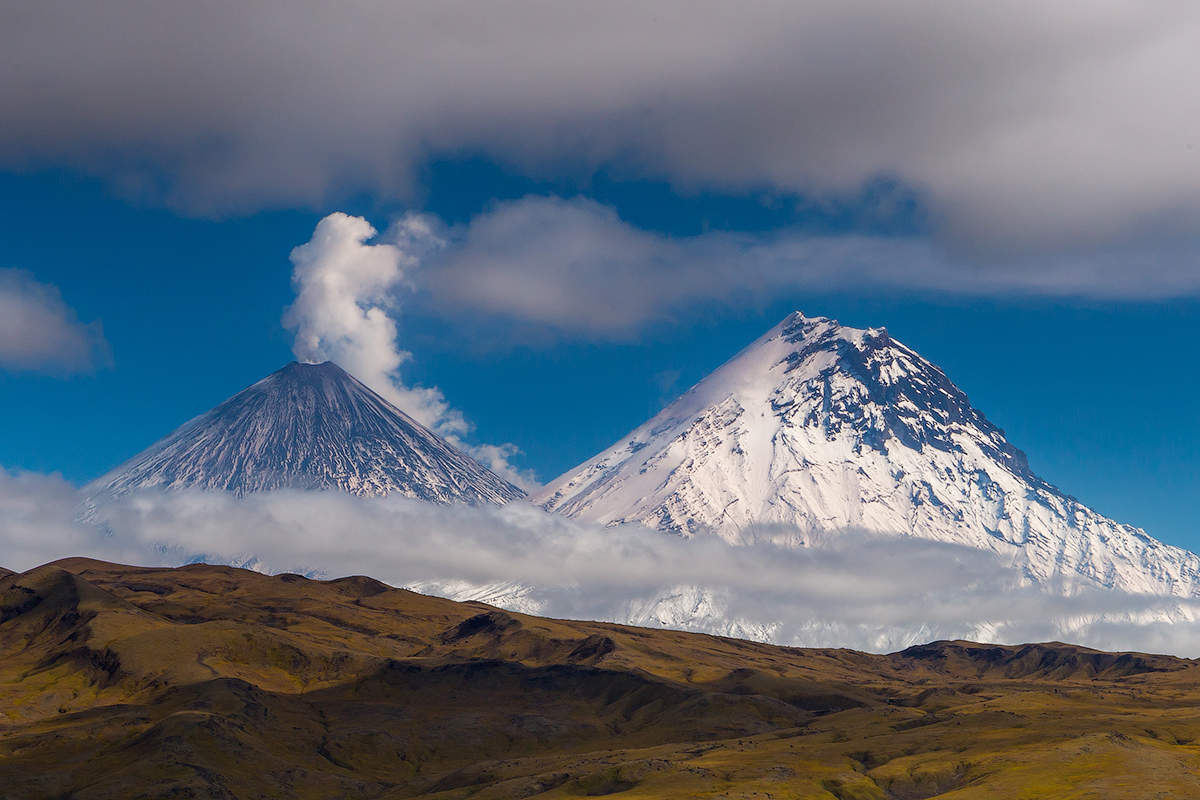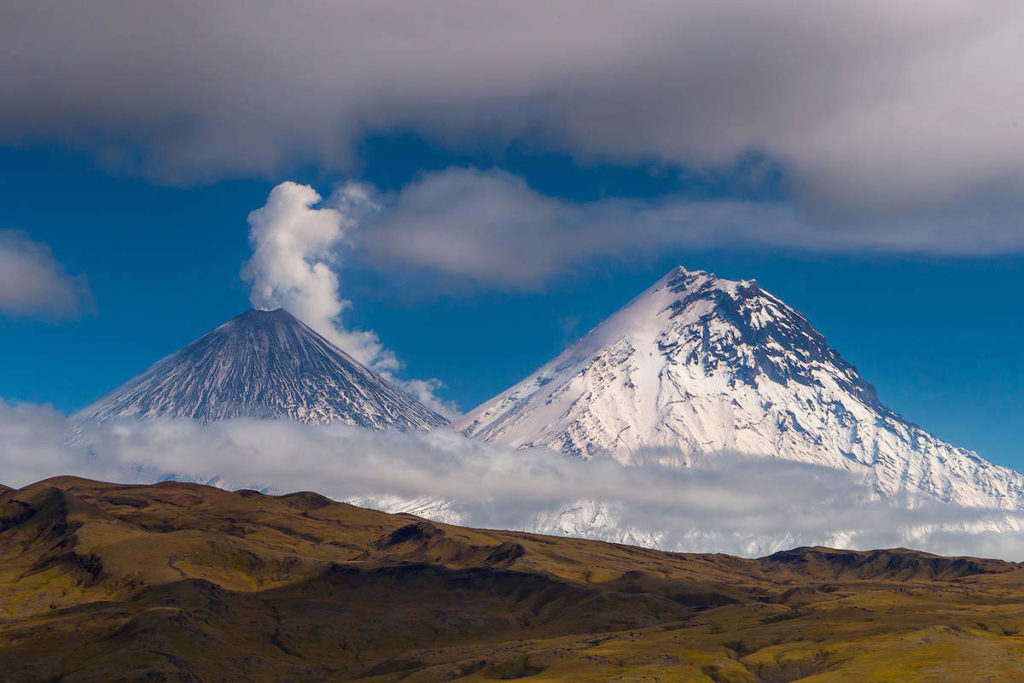Страна:
Регион:
Другие названия:
Значение:
Время визита:
Цена:
бесплатно
Почему Топ:
Целая страна вулканов — десятки гигантов, многие из которых действующие. Здесь можно увидеть живую геологию.
Описание:
One of the last pristine wilderness areas and most active volcanic regions in the world, with a high density (34 volcanoes) and an unusual range of types of volcano and related features. The seven areas within the designation include most of the volcanic characteristics of the Pacific Ring of Fire. The contrast of high active volcanoes and glaciers creates a dynamic landscape of great beauty. The sites contain great diversity of species, including the world’s greatest known variety of salmonid fish and notable concentrations of sea otter, brown bear and Steller’s sea eagle.
Категории:
Тэги:
Метки:
ЮНЕСКО
Темы:
Зачем посещать:
Интерес:
Физподготовка:
Лучшее время:
Доступ:
Roads:
Facilities:
Open:
Info:
Details:
Approximately 15,000 tourists visited Kamchatka in 1995, 4,000 of them foreign. Kronotskiy Nature Park is the only site in Russia with large geysers, which enhances its attraction for tourists (though their partial burial in 2007 may affect this). Approximately 2,500 tourists visit the Valley of the Geysers each year where a helipad and board-walk have been built and some measures have been taken to protect it from overuse by tourism (Krever, 1994; UNDP, 2001). There are Ecological Education Centres in both Kronotskiy Reserve and Nalychevo Park. Almost 1,200 visit the latter, but some 15,000 use its peripheral areas since it is very near Petropavlovsk. About 6,000 visit Bystrinsky each year, 100–150 being foreigners (UNDP, 2001). Helicopter access to tourist cabins within Nalychevo and Southern Kamchatka Nature Reserves is available. Between 1993 and 1999 the Klyuchevskaya group averaged about 250–300 visitors a summer, 100 being foreigners, but it does not yet cater for many tourists. Projects to promote eco-tourism are now underway, partly to supplement reduced government funding. No visitors are allowed to the reserves for a month in April to May while animals are breeding. The reserves are normally reached by helicopter along approved routes. The area’s international airport is at Elisovo.
Clothing:
Seasonable
Climate:
The peninsula being all but surrounded by sea has a moist cool maritime climate moderated by the ocean. Central Kamchatka, enclosed between the two mountain ranges, has a climate similar to the Siberia, and is snow-covered from October to May. On the west coast, temperatures are lowered by the cold Sea of Okhotsk. The climate is windy, often foggy and subject to very heavy snowstorms. At sea level, the mean temperature in July is 12°C but can reach 20°C; the mean temperature range in January is ‑6° to ‑10°C. The central valley becomes both warmer and colder than this, and drought there can give rise to very destructive forest fires. The rainfall is less than 400mm in the centre of the peninsula, nearly 1,000mm along the western coast and nearly 2,500mm in the southeast which is in the path of monsoonal rains and can be windy, stormy and snowy (Borodin, 1983).
Connection:
Ok
- Uzbekistan
- Germany
- Everyone says i’m running away
- Decline in international tourism to the US: causes and consequences
- Irkutsk
- Barack Obama: tourist places of his life and travels
- Turkmenistan
- Normandy
- Finland
- Mongolia
- Africa
- Kahovka
- Arabat Spit
- Ratmanov Island
- Chukchi
- Nicaragua
- North Coast 500: грандиозный маршрут по Северному нагорью Шотландии
- Uluṟu-Kata Tjuṯa and Kakadu National Parks Etched in Time
- Indians
- Mammoths and travel: where to see habitats, traces and digs, and museums

 France
France
